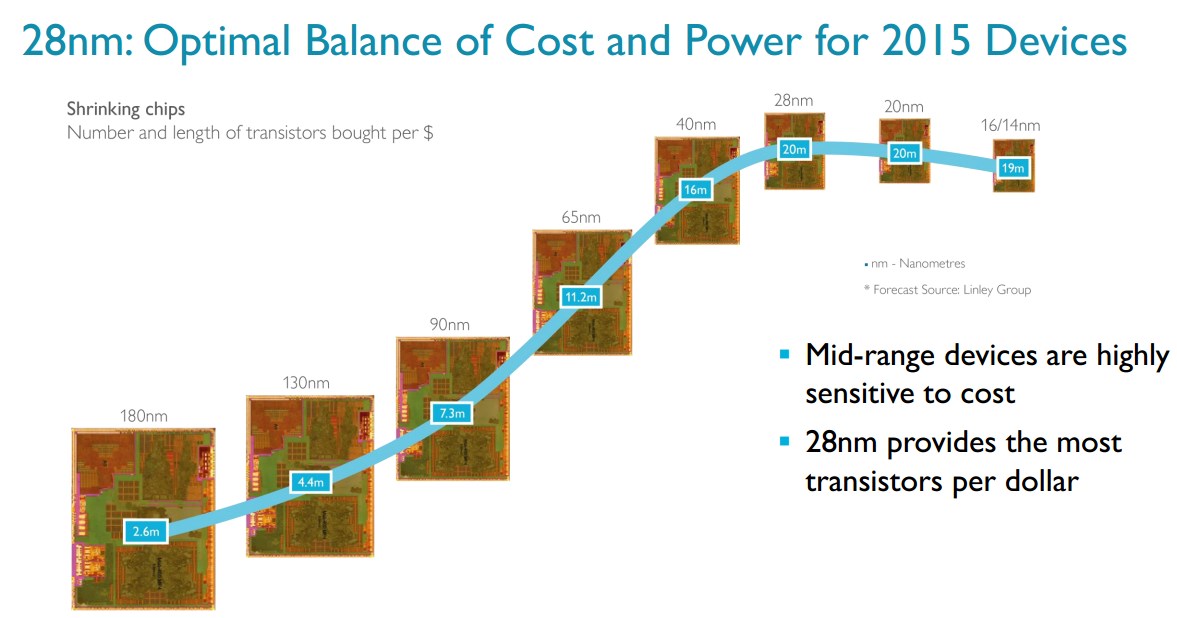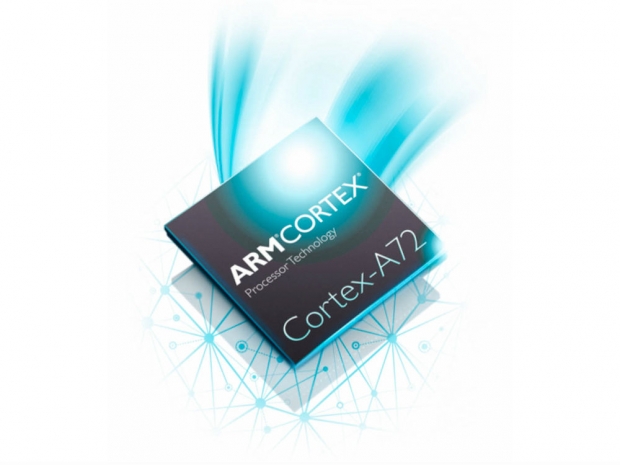There is one thing to keep in mind. The Cortex-A57 is by no means a new design. In fact, it was announced in October 2012, with availability slated for 2014. As we all know, the rollout wasn’t very smooth and the only Cortex-A57 consumer part ready to ship in 2014 was the Exynos 7410 of Galaxy Note 4 fame. It was followed by the Snapdragon 810 and Exynos 7420, which hardly need an introduction.
Cortex-A57 is on almost schedule, so what’s the big deal?
While it is true that the Cortex-A57 was almost on time, our concern isn’t the rollout schedule – it’s the lack of designs. For a product announced 30 months ago, it has relatively few design wins and this is not going to change. In fact, at this point it is more or less obvious that a number of major SoC makers will skip it altogether.
MediaTek recently announced its first Cortex-A72 tablet part and the company is planning to bring Cortex-A72 to smartphone SoCs by the end of the year.
Another relatively big player, Huawei HiSilicon, also appears to be skipping the A57. The company’s upcoming Kirin 940 and Kirin 950 parts should end up with Cortex-A72 cores instead. That’s not all, because some outfits like Nvidia have their own custom cores. Qualcomm is also expected to employ a custom core in the Snapdragon 820, while rumours of a Samsung custom ARMv8 core have been floating around for ages.
Thermal barrier and economics stall ARM SoC evolution
There are a few possible explanations for the lack of Cortex-A57 design wins, and they involve physics and economics.
From a technical perspective, the A57 requires too much effort and does not provide huge performance gains. Used in a big.LITTLE octa-core, the Cortex-A57 necessitates the use of four additional Cortex-A53 cores, a big GPU to match its potential, and the customary 4G modem found on high-end devices. All this results in a relatively big die with a lot of transistors, especially on planar nodes.

Snapdragon 810 layout - note the size of the GPU, modem, and other modules. The CPU doesn't look too big, but unlike other modules it is always utilised to some extent. Under load, the CPU and GPU are bound by the thermal envelope, which is not the case with the rest of the chip.
Thermal and power efficiency issues are another concern, as such a chip simply can’t reach its full potential on planar nodes, unless consumers suddenly become interested in buying big and thick phones, with oversized heatsinks and batteries.
The Cortex-A57 really isn’t an option at 28nm. It can, however, be successfully deployed on 20nm and 14/16nm FinFET nodes. This makes it an unattractive proposition for all but the most expensive devices, since it’s an elaborate design that requires an expensive, cutting-edge node to be implemented. By the time FinFET matures and foundry costs go down, ARM will already have another design to take its place – the Cortex-A72.
Cortex-A57 vs. Cortex-A72
The Cortex-A72 was announced in February 2015 and ARM expects to see it in commercially available devices by early 2016. Some chipmakers would like to get their hands on it even sooner, even using it on 28nm nodes rather than FinFET nodes it was originally designed for.
In some respects, the Cortex-A57 shared a similar fate to that of its predecessor, the Cortex-A15. The latter debuted on Samsung’s 32nm parts, but due to thermal issues the core wasn’t widely used until 28nm nodes became available (and cheap). However, it was all a matter of good timing – the A15 arrived just in time for 28nm, while the A57 sort of missed its window of opportunity.
Worse, Android 5.0 brought 64-bit support last year, prompting Google to tap Nvidia for its Nexus 9 tablet, as its Denver core was practically the only 64-bit ARM "big core" Google could use. Consumers could get affordable Cortex-A53 devices with 64-bit support, but they couldn’t get flagship 64-devoces. This may not be an important distinction for the average Fudzilla reader, since tech enthusiasts know 64-bit support simply wasn’t too relevant in 2014 (and still isn’t). However, it was a lot easier to market 64-bit parts based on small cores than big 32-bit cores.
So, will the Cortex-A72 end up with more design wins than the A57? Is it really much better than the A57?
Personally, I am inclined to say that the Cortex-A72 will be a lot more successful, not by virtue of its design, but thanks to better timing and the limited appeal of the Cortex-A57. ARM did not reveal a lot of information on the A72, other than to state that new core will be vastly more efficient than the A15 and A57, but its numbers were based on different nodes (28nm for A15, 20nm for A57, 16nm for A72).
We simply don’t know much about the Cortex-A72 yet and it's too early to jump to conclusions.
What does this mean for 2015?
Moving forward, the lack of a viable 64-bit ARM core for mid-range, and even some high-end devices on 28nm, is bound have a number of implications on the smartphone SoC market and smartphone design in general.
The Cortex-A57 simply won’t end up in a lot of devices, as it only makes sense on 20nm and 14/16nm FinFET nodes, so chipmakers will have only one choice – churn out more Cortex-A53 parts at higher clocks, with faster GPUs and better LTE support. Unlike last year, they don’t have the option of using four cores (A15, A17, A9 and A7), as they can only use A57 and A53 cores, but the A57 simply doesn’t work for most market segments. The Cortex-A17 looks like a very tempting alternative and MediaTek already tapped it for some parts, but this is a 32-bit core, positioned below the Cortex-A15 and Cortex-A57. While the A17 is a good performer with a good price/performance ratio, consumers demand 64-bit chips, plain and simple.
This will obviously have the effect of blurring the line between low- and mid-end devices, as many of them will have to share similar silicon – consumers will get A53 cores whether they’re buying a $100 phone or a $300 phone.
Companies like Huawei and MediaTek have already hinted at, or revealed chips designed to address the problem, by including four A53 cores at higher clocks (Huawei calls them A53e or enhanced cores). These cores will be backed by four slower A53 cores, and Qualcomm already uses such a layout in the Snapdragon 615.

When ARM announced the Cortex-A17 last February, the company made it clear that 28nm would provide “the most transistors per dollar” – this is still the case.
It is highly unlikely that any of these chips will be manufactured using expensive 20nm or FinFET nodes, at least not in the foreseeable future (at least four quarters, possibly five due to high demand for flagship chips in Q1 2016). Capacity is limited, cost will remain prohibitively high for months, and 28nm works just fine for Cortex-A53 parts. As a result, SoC designers are already doubling down on 28nm capacity, as it is obvious the node will have to soldier on well into 2016.
So here are Fudzilla’s predictions for 2015 SoCs and smartphones:
- Cutthroat competition in 28nm low- to mid-range SoCs, every penny counts.
- Use of octa-core Cortex-A53 processors in some flagship and quasi-flagship devices, especially in China.
- Limited demand for Cortex-A57 products.
- Lack of Cortex-A17 designs (a 64-bit alternative is needed).
- Upswing in Q4 2015 and beyond, as Cortex-A72 and custom core designs come online.
- Even more 28nm Cortex-A53 designs with tweaked cores, updated graphics and modems.
- Smartphone makers will have to devise new ways of differentiating non-flagship products.
- Prices of mid-range devices are likely to drop.
- No Cortex-A53 parts on 20nm or 14/16nm nodes.
- 28nm node will continue to dominate the mobile landscape for at least 4 quarters and start tapering off in the second half of 2016.
- Soft demand for limited capacity FinFET nodes over the next 2-3 quarters due to lack of Cortex-A57 designs.
- Intel could benefit from stalled ARM development.
There are a few caveats. Some small-core chips could make it to a new node later this year, but we are talking about niche products (perhaps some wearable SoCs, or in-house designs for certain low-volume smartphones). If demand for FinFET parts proves to be much lower than anticipated, it is possible that foundries will have to reduce pricing as more capacity comes online – but this depends on a wide range of factors and we doubt anyone can make a good forecast for at least the next quarter or so.
2015 will not be a very eventful year for the ARM SoC market, but it might turn out to be a race to the bottom.




